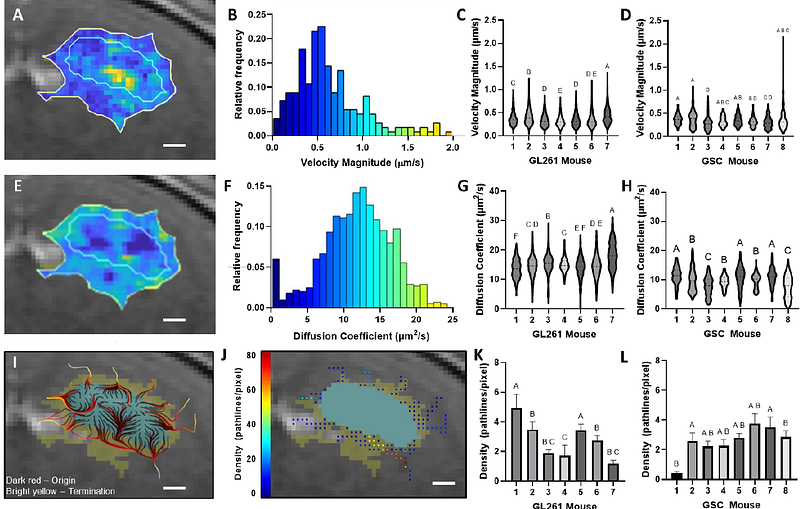Interstitial fluid transport dynamics predict glioblastoma invasion and progression

Interstitial fluid transport dynamics predict glioblastoma invasion and progression
Carman-Esparza, C. M.; Stine, C. A.; Atay, N.; Kingsmore, K. M.; Wang, M.; Woodall, R. T.; Rockne, R. C.; Cunningham, J. J.; Munson, J. M.
AbstractGlioblastoma is characterized by aggressive infiltration into surrounding brain tissue, hindering complete surgical resection and contributing to poor patient outcomes. Identifying tumor-specific invasion patterns is essential for advancing our understanding of glioblastoma progression and improving surgical and radiotherapeutic strategies. Here, we leverage in vivo dynamic contrast-enhanced magnetic resonance imaging (DCE-MRI) to noninvasively quantify interstitial fluid velocity, direction, and diffusion within and around glioblastomas. We introduce a novel vector-based pathline analysis to trace downstream accumulation of fluid flow originating from the tumor core, providing a spatially explicit perspective on local flow patterns. We find that localized fluid transport metrics predict glioblastoma invasion and progression, offering a new framework to non-invasively identify high-risk regions and guide targeted treatment approaches.